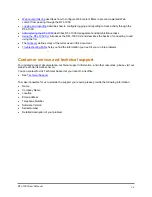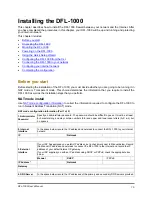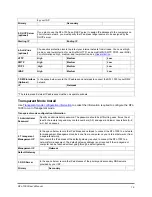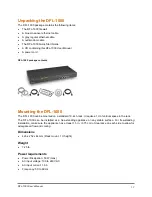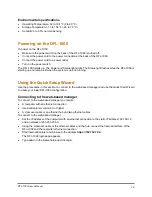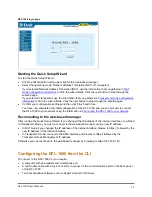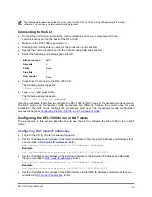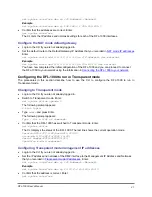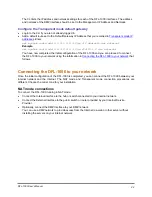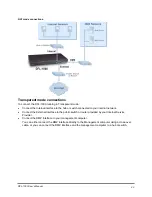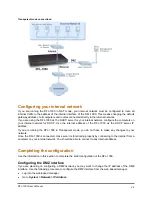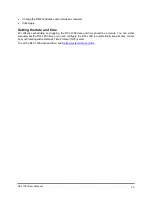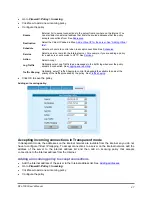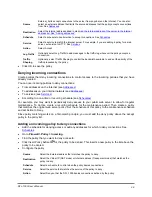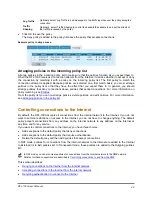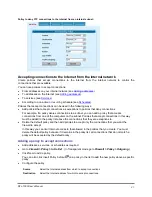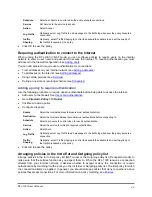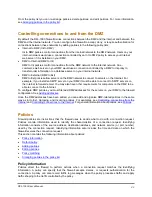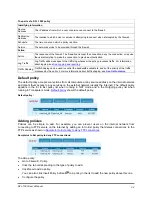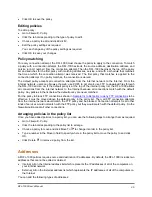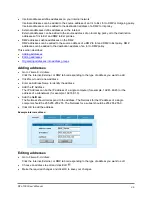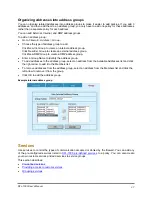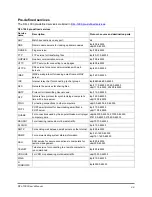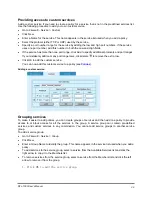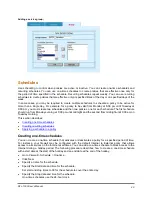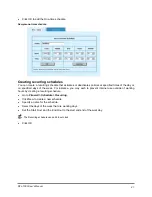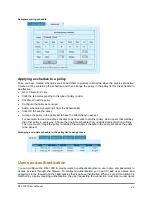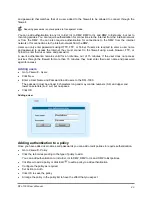
Source
External_All to accept connections to the server from anywhere on the Internet. You can also
select an external address that limits the source addresses that the policy accepts connections
from. See
Destination
Select the Internal address added in step
Add the Internal address of the server to the Internal
address list. See "Adding addresses"
Schedule
Select a schedule to control when to accept connections. See
.
Service
Select a service to match the Internet server. For example, if you are adding a policy for a web
server, set service to HTTP. See
.
Action
Select Accept.
Log Traffic
Optionally select Log Traffic to add messages to the traffic log whenever the policy accepts a
connection.
Traffic
Shaping
Optionally, select Traffic Shaping to control the bandwidth available to and set the priority of the
traffic processed by the policy.
•
Click OK to save the policy.
Denying incoming connections
Create policies that deny incoming connections to control access to the incoming policies that you have
already created.
You can use incoming policies to deny connections:
•
From addresses on the Internet (see
•
To addresses on your internal network (see
)
•
To services (see
•
According to a one-time or recurring schedule (see
)
For example, you may want to periodically deny access to your public web server to allow for regular
maintenance. To do this, create a recurring schedule for the maintenance period. Then create a policy
that matches the original web server policy. Set the schedule of this policy to the maintenance schedule
and set Action to Deny.
Since policy matching works on a first-match principle, you must add the deny policy above the accept
policy in the policy list.
Adding an incoming policy to deny connections
•
Add the schedule for denying access or add any addresses for which to deny connections. See
.
•
Go to
Firewall > Policy > Incoming
.
•
Find the policy that you want to deny access to.
•
Click Insert Policy before
for the policy to be denied. This inserts a new policy in the list above the
policy to be denied.
•
Configure the policy.
Source
Select the External address that matches the policy to deny.
Destination
Select the Virtual IP (NAT mode) or Internal address (Transparent mode) that matches the
policy to deny.
Schedule
Select a schedule to control when the policy denies connections.
Service
Select the service that matches the service of the policy to deny.
Action
Select Deny so that the DFL-1000 denies connections defined by the policy.
DFL-1000 User’s Manual
28

